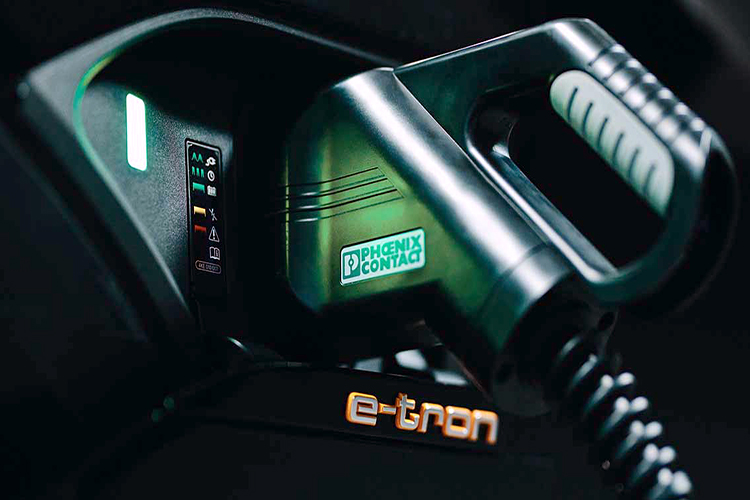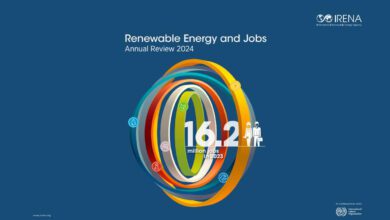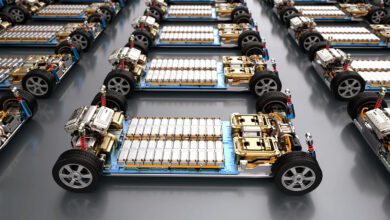Increasing network stability, lowering electricity costs, and contributing to climate protection that is the vision that Audi and the Hager Group are pursuing. The incorporation of the electric car into the domestic grid is at the core of an innovative research project on bidirectional charging. This offers major advantages in combination with a photovoltaic system in particular. Excess PV electricity can be stored temporarily and output as needed.
Audi has committed to the objectives of the Paris Climate Agreement and is working on making its vehicle fleet CO2-neutral by 2050. In order to achieve this aim, the brand with the four rings is pursuing a broad electric offensive that involves launching around 20 fully electric models by 2025. And not only that: The electric car is to evolve into part of an increasingly broad mobility offer and become an element of the sustainable energy transition.
In the first half of 2020, renewable energies contributed more than 50 percent to the German electricity mix for the first time. However, the increasing percentage is also accompanied by a basic dilemma of wind and solar power: The generation of electricity is not always constant. On sunny days and phases with strong winds, there is often a lack of capacity to store the generated energy that the grid cannot use.
As the number of registered electric cars increases, the number of mobile energy storage units also rises. This offers great potential, provided that the storage capacity can be used intelligently. This is why Audi and the Hager Group joined hands and developed a research and solution approach that creates financial incentives and offers greater security of supply: bidirectional charging. “Electric mobility is bringing the automotive industry and the energy sector closer together. The battery of an Audi e-tron1 could supply a single-family home with energy for around one week independently. Looking ahead, we want to make this potential accessible and make the electric car part of the energy transition as an energy storage device on four wheels,” says Martin Dehm, technical project manager for bidirectional charging at Audi.
The electric car as a flexible energy storage unit
The idea is as simple as it is genius: The high-voltage battery of the electric car not only is charged via the wall box at home but can also supply energy back to the house as a decentralized storage medium. If the customer has a photovoltaic system, the electric car serves as a temporary storage medium for the domestically generated eco-electricity. When the sun is no longer shining, the vehicle can supply the stored electricity back to the house. Bidirectional charging at home – also known as Vehicle to Home (V2H) – has great potential to reduce the home owner’s electricity costs and increase network stability. As a further expansion stage in combination with a home storage unit, it is possible to achieve near complete energy independence and increased security of supply in the event of a blackout. “Using the battery of electric vehicles to contribute to climate protection while lowering electricity costs at the same time is a vision that we have found fascinating since the very beginning. And we have found an ideal partner in Audi,” explains Ulrich Reiner, project manager at Hager Group.
Near-series technology in use
What sounds simple in theory requires a high level of technical intelligence and coordinated interaction between different technical components in terms of infrastructure and in the vehicle in practice. An Audi e-tron with near-series charging technology was used in the research project. In the test grid, the fully electric Audi model operated with a DC wall box, which enables a charging capacity of up to 12 kW, and a flexibly extendable home storage unit with a capacity of 9 kWh. While it could provide additional flexibility in possible series production, it is not a necessary requirement for bidirectional charging. Thanks to the DC voltage level in the overall grid, the connection between the PV system and the vehicle does not require an inverter and is thus a particularly efficient solution.
Charging with PV electricity saves money
Bidirectional charging focuses mainly on use cases where home owners use their own photovoltaic system to benefit from cost-optimized charging with their domestically generated electricity. The electric car stores the excess electricity from the PV system that is not used by appliances in the house. If the customer has variable rates, the electric car can supply the entire house in phases where electricity prices are high. At night or during non-productive times of the rate, the car then uses inexpensive electricity to charge up to the desired target SOC (state of charge). Bidirectional charging also provides a security of supply that extends beyond pure cost optimization: In the event of a blackout, the system can supply the house with energy via the high-performance HV battery or it can even operate a building without a grid connection independently in what is known as stand-alone operation.
Everyday usability in the focus of the developers
The developers made everyday usability a top priority. “Maintaining mobility is at the centre of our attention. Customers therefore don’t need to restrict themselves in order to make bidirectional charging suitable for everyday use,” Dehm describes the focus of the development. “The intelligent charging management manages the optimum use of the battery, thereby maximizing the cost-effectiveness of the overall system. The system is very easy for customers to use – all they have to do is plug in the car, and the rest happens automatically.”
The joint research project with the Hager Group has proven two essential things: Customers who have their own PV system can design their mobility to be optimized in terms of cost and CO2 consumption while taking some of the burden off the grid at the same time. As a positive side effect, customers who own an electric car from Audi can make an important contribution to the success of the energy transition. The intelligent use of the HV battery in the vehicle also opens up possibilities to use an existing resource that was previously used for mobility purposes alone in a sustainable way.












